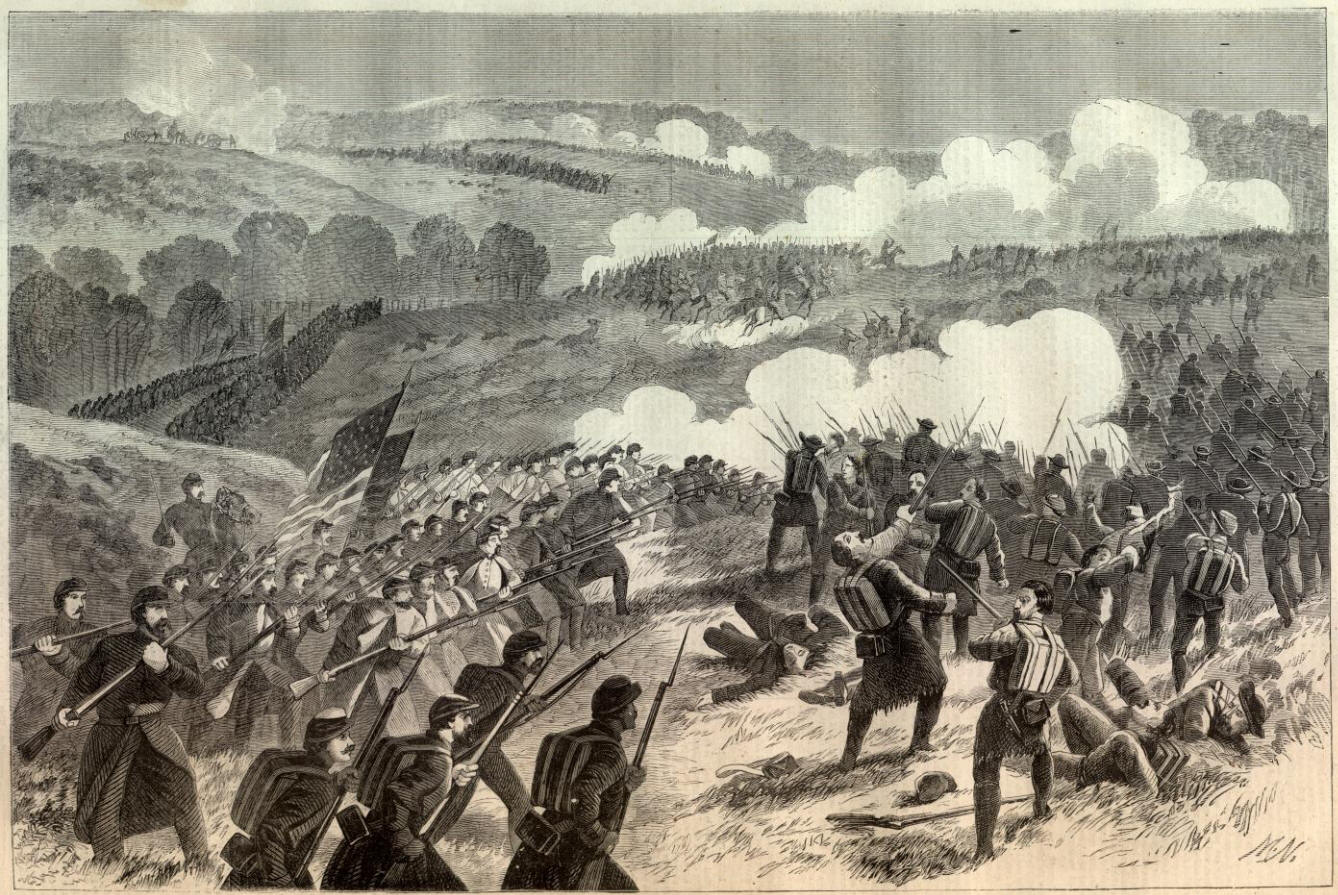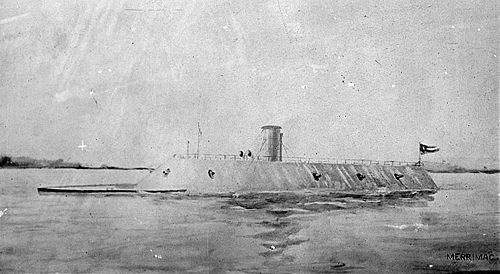 |
| CSS Virginia |
At the same time as the Battle of Elkhorns tavern was being fought, another equally important naval battle was being fought off Hampton Roads, Virginia. The Confederates had raised the USS
Merrimack, and had converted her from a normal sailing ship to a new ironclad called the CSS
Virginia. She was ready to attack the blockading squadron off Virginia in early March. As she moved down the river, the engineers were still working on getting her ready for battle. She had strong armor, but she was slow. She carried several guns, and another important tactic would be ramming in the sides of the wooden ships. As she moved forward 150 years ago today, she was accompanied by what was called a Mosquito Fleet, small gunboats carrying one or two cannon. They were not strong enough to stand up to the Federal ships, and did not play an important role in the battle.
 |
| Ramming the Cumberland |
The Union blockading squadron at Hampton Roads consisted of the
Congress, Cumberland, St. Lawrence, Roanoke and
Minnesota along with some smaller boats. Although they were all wooden, they were some of the most powerful ships the United States had. When the Union fleet saw the Virginia approaching with her sister ships, they went out to meet her. The
St. Lawrence and
Roanoke ran aground before reaching the
Virginia. The
Virginia picked out the
Cumberland and charged in an effort to ram. The
Cumberland opened fire on the
Virginia, but the shots just bounced off the ironclad's armor. Getting in range, the
Virginia sped up to ram the
Cumberland. Ashton Ramsey, an officer on the
Virginia, remembered the experience:
"There was an ominous pause, then a crash, shaking us all off our feet. The engines labored. The vessel was shaken in every fiber. Our bow was visibly depressed. We seemed to be bearing down with a weight on our prow. Thud, thud, thud, came the rain of shot on our shield from the double-decked battery of the Congress. There was a terrible crash in the fire-room. For a moment we thought one of the boilers had burst. No, it was the explosion of a shell in our stack. Was any one hit? No, thank God! The firemen had been warned to keep away from the up-take, so the fragments of shell fell harmlessly on the iron floor-plates. We had rushed on the doomed ship, relentless as fate, crashing through her barricade of heavy spars and torpedo fenders, striking her below her starboard fore-chains, and crushing far into her. For a moment the whole weight of her hung on our prow and threatened to carry us down with her, the return wave of the collision curling up into our bow port. The Cumberland began to sink slowly, bow first, but continued to fight desperately for the forty minutes that elapsed after her doom was sealed, while we were engaged with both the Cumberland and the Congress, being right between them. We had left our cast-iron beak in the side of the Cumberland. Like the wasp, we could sting but once, leaving it in the wound."
With the
Cumberland sinking from the
Virginia attack, the
Congress attacked next. Not being able to ram, the
Virginia traded broadsides with her. The
Congress's shots bounced harmlessly off the Virginia's iron sides. The shells from the
Virginia, however, tore through the wooden sides of the
Congress, inflicting many casualties. Finally she surrendered, knowing the fight was hopeless against the seemingly impregnable
Virginia. The
Congress was set on fire, and it burned through the night, finally exploding and sending flames high into the air. As it was late in the day, the
Virginia retreated back up the river, ready to return the next day and finish off the rest of the Federal ships.
.jpg/400px-USS_Congress_(1841).jpg) |
| USS Congress |
In this one day the
Virginia changed naval history. Although it was known that ironclads were the future of warfare, an ironclad had never fought a wooden ship. The
Virginia had shown what ironclads could two. The
Virginia had sunk two of the best ships of the United States navy, inflicting 300 casualties, while she remained almost completely unharmed. There was nothing forseeable in the minds of the North prohibiting the
Virginia from sailing to any Northern port and blasting it into submission. Stanton, Lincoln's secretary of war, said this:
"The Merrimac will change the whole character of the war; she will destroy, seriatim, every naval vessel; she will lay all the cities of the seaboard under contribution. I shall immediately recall Burnside; Port Royal must be abandoned.... I have no doubt that the monster is at this minute on her way to Washington, and not unlikely we shall have a shell or cannonball from one of her guns in the White House before we leave the room."
.jpg/500px-CSS_Virginia,_wash_drawing_by_Clary_Ray_(Photo_-_NH_57830).jpg) |
| CSS Virginia |
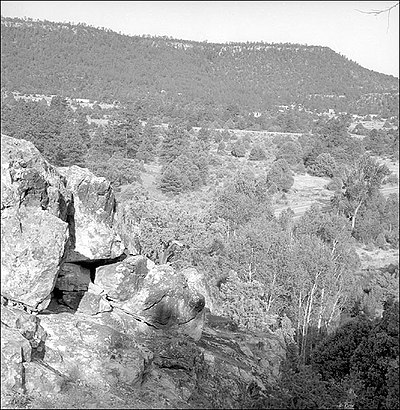



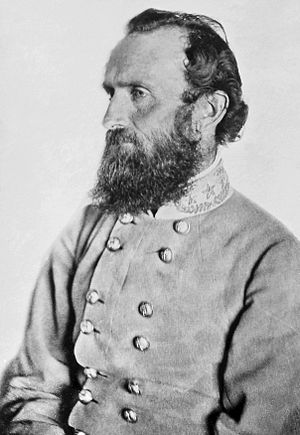
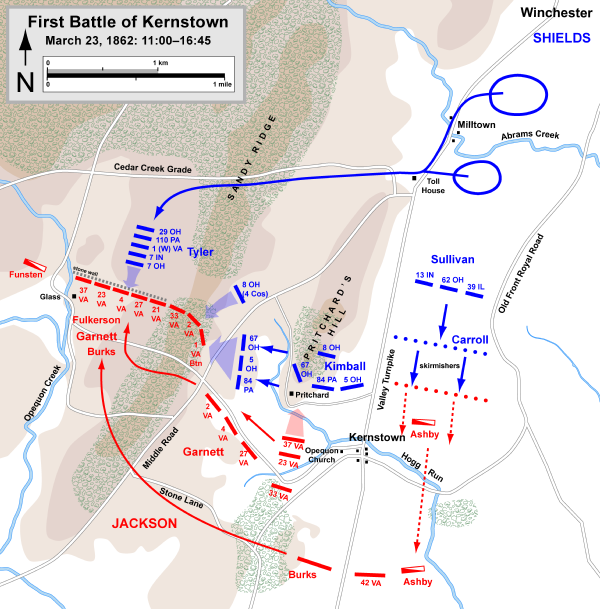







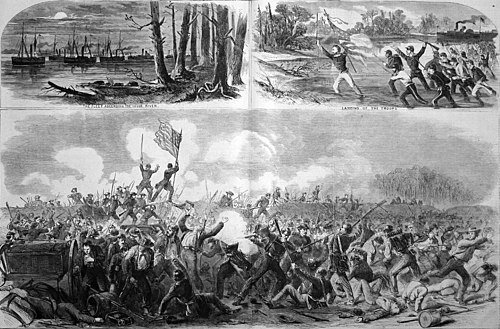

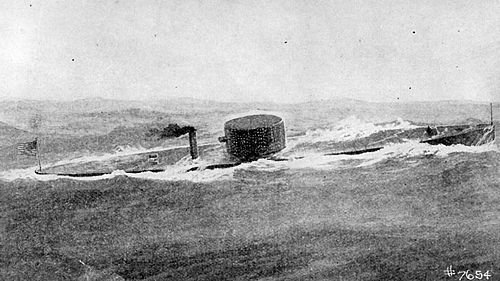


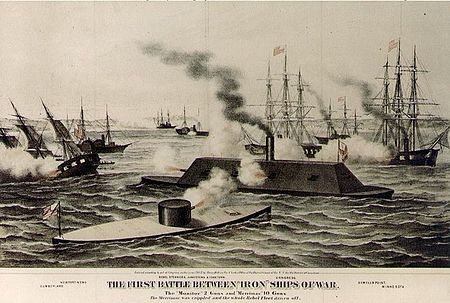



.jpg/400px-USS_Congress_(1841).jpg)
.jpg/500px-CSS_Virginia,_wash_drawing_by_Clary_Ray_(Photo_-_NH_57830).jpg)
